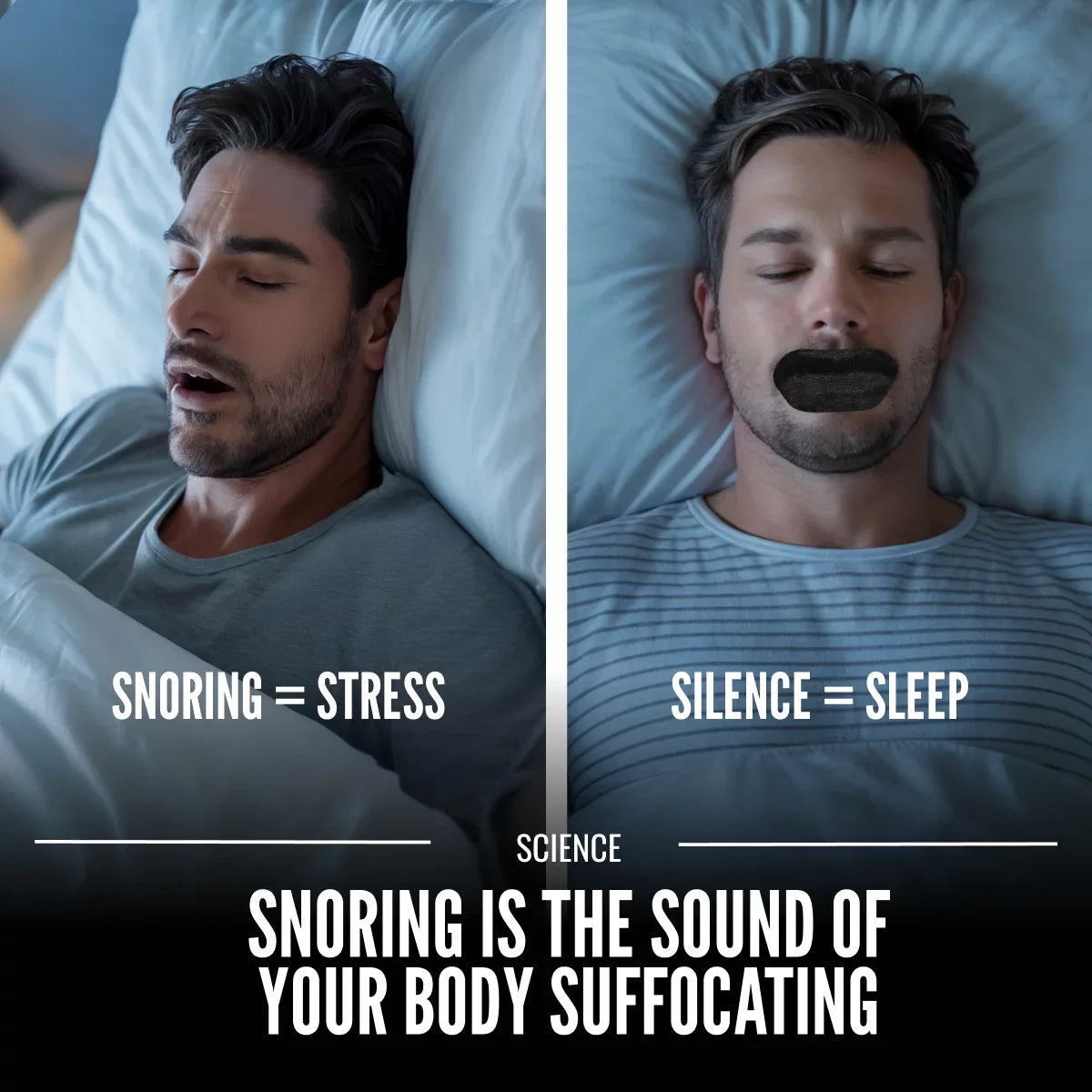It’s 6:43 a.m. Your alarm is blaring. Your mouth feels like you’ve been chewing on sandpaper dipped in battery acid. Your spine’s twisted like a horror movie contortionist.
And your dreams? Nothing but a blur of restless chaos and half-wakeful rage.
You didn’t sleep.
You survived the night.
And you’re wondering:
“Is it my mattress? My neck? My sleep position?”
Here’s the brutal truth:
Your sleep position isn’t just about comfort—it’s either helping your body recover or dragging it deeper into a pit of stress, snoring, and slow deterioration.
And if your mouth was wide open all night?
Yeah. You were being held hostage in your own bed.
Let’s get you out of there.
Side, Back, or Faceplant: Which Position Actually Works?
Some sleep like royalty—on their backs, motionless and serene.
Others curl up like human croissants, face mashed into the pillow, limbs thrown around like a bar fight just ended.
But here’s what your chiropractor won’t tell you:
The best sleep position isn’t the one that feels the most like a snuggle. It’s the one that keeps your airway open, your breath low and slow, and your nervous system off high alert.
Let’s break them down.
Side Sleeping: The Unsung Hero (When Your Mouth Isn’t Sabotaging It)
If there’s a gold medal position, side sleeping’s wearing it—especially on your left. It’s the body’s preferred blueprint for:
-
Better digestion
-
Lymphatic drainage
-
Reduced acid reflux
-
Less pressure on your heart
-
A more open airway for unobstructed breathing
But there’s a catch.
Side sleeping with an open mouth? That’s like putting premium gas in a car with a slashed tire.
Your jaw drops.
Your throat dries out.
You snore like a broken appliance.
And all that “optimal positioning” goes down the drain with every wheezy mouth-breath.
Want to stop ruining side sleeping? Start here:
Back Sleeping: The Calm Killer
Back sleeping has a reputation. It’s elegant. Good for spinal alignment.
But it’s also a sleep disaster factory if your mouth and tongue aren’t fully locked in.
Here’s what actually happens:
-
Your jaw slides open like a puppet with its strings cut
-
Your tongue collapses into your throat
-
Your airway tightens into a straw
-
Your partner lies awake considering homicide charges
Unless you’re a nasal-breathing master with Olympic-level airway strength, back sleeping is a gamble you will lose.
Curious how mouth breathing affects your brain while you sleep like this?
Read: Mouth Breathing and the Brain
Stomach Sleeping: The Breath-Snuffing Death Curl
You think it’s comforting. Familiar.
But stomach sleeping is the sleep equivalent of faceplanting into a sandbag while someone slowly cuts off your air supply.
Your head’s twisted sideways.
Your neck’s screaming.
Your lungs are compressed.
And nasal breathing? Nearly impossible.
This position turns your pillow into an accidental smothering device and leaves you waking up like you just got jumped by the Sandman.
This is not rest. This is stress cosplay.
The Real Saboteur: Mouth Breathing in Any Position
You can sleep like a yoga instructor photographed in a meadow at golden hour—but if your mouth is open, you’re wrecking your night. Period.
Mouth breathing:
-
Switches your nervous system into panic mode
-
Dries out your airway like desert wind
-
Shuts down deep sleep cycles
-
Elevates cortisol (a.k.a. the “why am I like this?” hormone)
-
Sends your brain the message: “Don’t relax. You’re under siege.”
And once your body learns that as its baseline?
Every position becomes a torture device.
The Solution: Hostage Tape (Because Your Mouth Has No Self-Control)
You can’t tape your body into a perfect position all night. But you can stop your jaw from betraying you.
Hostage Tape makes sure your mouth stays shut—so your nose can do its job, your nervous system can stand down, and your sleep position actually works the way nature intended.
Whether you sleep on your side, your back, or diagonally like a possessed starfish:
-
Hostage Tape keeps you nasal breathing
-
Hostage Tape reduces snoring and fragmented sleep
-
Hostage Tape turns your nights into a recovery mission, not a survival story
Don’t let bad sleep (or snoring) from mouth breathing hold you or your partner hostage.
Shut it down. Tape it up. Sleep like you’re off the grid.
Want to know why nasal breathing is your nervous system’s best friend?
Read: Nasal Breathing and the Parasympathetic Nervous System
Final Verdict: The Best Sleep Position Is… Conditional
-
Best: Side sleeping—only if your mouth is taped shut
-
Acceptable: Back sleeping—for those with elite-level nasal breathing discipline
-
Worst: Stomach sleeping, aka “DIY suffocation”
But here’s the kicker:
Your sleep position only matters if your breath isn’t working against you.
And unless you’re the rare unicorn who keeps their jaw magically shut all night—you need back-up.
Shop Hostage Tape now
Because you can’t always control how you move in your sleep.
But you can control what your mouth does while you’re out cold.
More Truth Bombs for Better Sleep:
Sleep deeper. Breathe smarter. Tape up.
Because your sleep position isn’t the enemy.
Your open mouth is.






Share:
Which Is Better: Chest or Belly Breathing? One Sends You Into Deep Sleep.
Mouth Breathing in Kids: Why It’s Not Just a Phase (And What to Do Now)